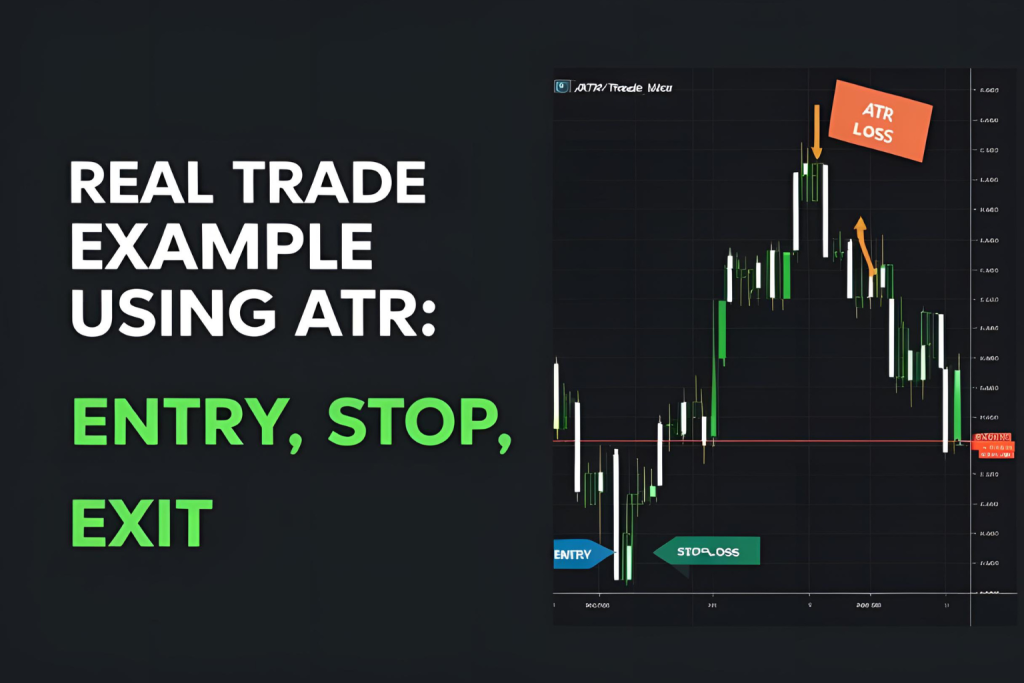Placing stop-losses is one of the most critical—and challenging—parts of trading. Set them too tight, and you get stopped out on noise. Set them too wide, and you risk losing more than necessary. That’s where ATR stop-loss placement comes in.
The Average True Range (ATR) helps traders set stop-loss levels that adapt to current market volatility, making them more reliable than fixed pip or point-based stops.
Why Use ATR for Stop-Loss?
- Market-Responsive: ATR adjusts to real-time volatility
- Reduces False Stops: Avoids getting stopped on small price swings
- Better Risk Control: Helps size positions more precisely
Unlike static methods, ATR-based stops expand or contract based on how wild or calm the market is.
✅ Step-by-Step: ATR Stop-Loss Placement
1. Add ATR to Your Chart
- Use default 14-period ATR
- Available on TradingView, MT4/MT5, Thinkorswim, etc.
2. Get the Current ATR Value
Example: If ATR(14) = 1.5, it means the asset typically moves 1.5 points/units per candle.
3. Choose a Multiplier
Common stop-loss multipliers:
- Conservative: 1.0 × ATR
- Balanced: 1.5 × ATR
- Volatile markets: 2.0 × ATR
4. Set Your Stop-Loss
- For Long Trades:
Stop-Loss = Entry Price – (ATR × Multiplier) - For Short Trades:
Stop-Loss = Entry Price + (ATR × Multiplier)
✅ Example Trade
- Asset: Stock ABC
- Entry: $100
- ATR(14): 2.0
- Multiplier: 1.5
- Stop-Loss: $100 – (2.0 × 1.5) = $97.00
This means your stop-loss is placed $3 below entry, accounting for current volatility.
✅ Position Sizing with ATR-Based Stops
ATR also helps determine how many shares or lots to trade.
Formula:
javaCopyEditPosition Size = Account Risk $ / (ATR × Multiplier)
If you risk $200 per trade and your ATR stop is $3:
javaCopyEditPosition Size = 200 / 3 = ~66 shares
This keeps your risk consistent across trades.
Bonus: ATR Trailing Stops
- As the trade moves in your favor, trail your stop-loss using updated ATR values
- Example: Trail stop at lowest price of previous candle – ATR
This protects profits while giving the trade room to run.
Final Thoughts
ATR stop-loss placement makes your trading more adaptable and disciplined. By matching your risk controls to market conditions, you reduce false exits and create a more consistent trading approach.
Whether you trade forex, stocks, or crypto—this technique improves how you handle risk.
✅ FAQs
1. Is 1.5x ATR the best multiplier?
It’s a balanced option, but you should test different values based on your strategy.
2. Can I use ATR for stop-loss in scalping?
Yes, but use shorter ATR periods like 5 or 7 for fast-paced markets.
3. Does ATR help with profit targets too?
It can. Some traders use ATR multiples for both stop and target levels (e.g., 1.5× stop, 3× target).
4. Is ATR stop-loss better than using support/resistance?
ATR is dynamic. You can combine both for even more precision.
5. Can I automate ATR-based stop-losses?
Yes. Most trading platforms support custom scripts for dynamic stops using ATR.


